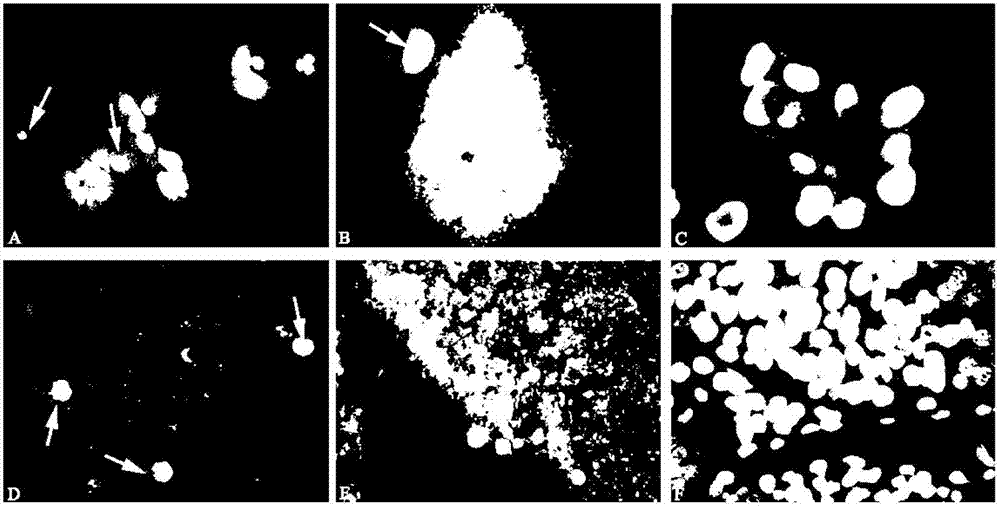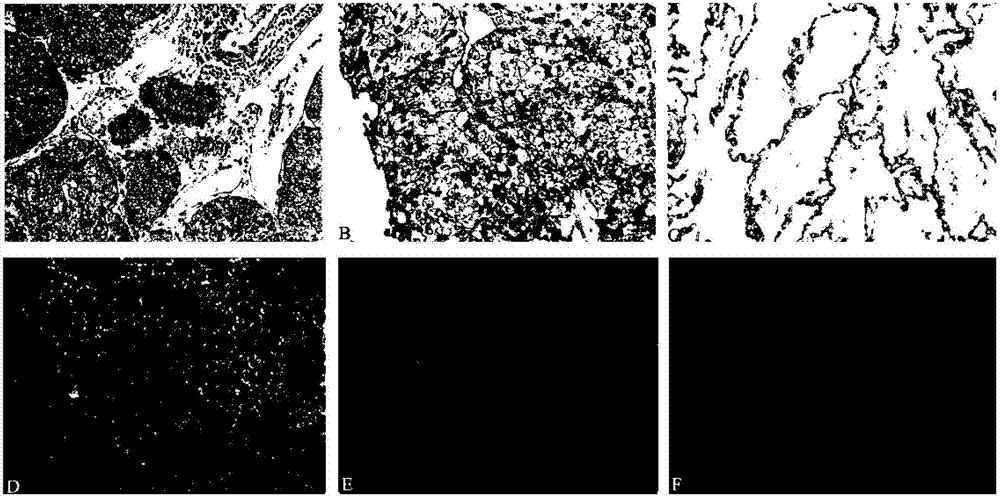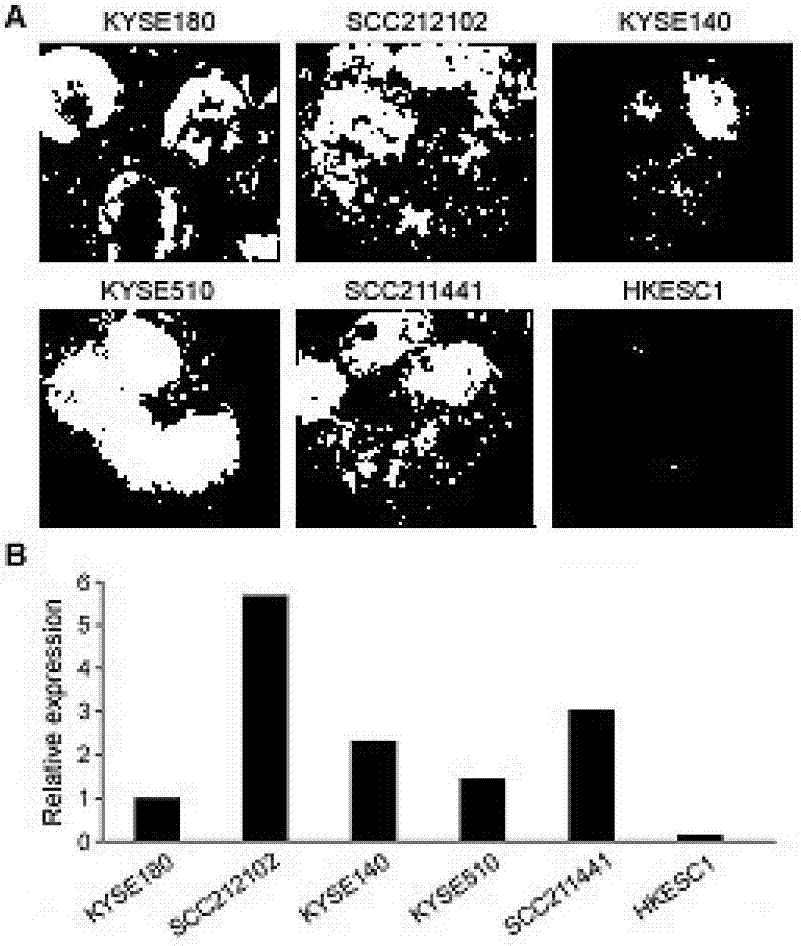MiRNA in-situ hybridization probe, its detection kit and its application
A detection kit and in situ hybridization technology, applied in DNA/RNA fragments, recombinant DNA technology, microbial measurement/inspection, etc., can solve the problem of small Tm value, expensive price, and small Tm value cannot meet in situ hybridization And other problems, to achieve good specificity, cheap effect
- Summary
- Abstract
- Description
- Claims
- Application Information
AI Technical Summary
Problems solved by technology
Method used
Image
Examples
Embodiment 1
[0028] Embodiment 1: the test kit of a preferred embodiment of the present invention
[0029] The kit in this example includes miR146-5p hybridization probe, control probe, prehybridization solution, blocking solution and markers.
[0030] The sequence of the miR146-5p hybridization probe is 5'-3': AGCCTATGGAATTCAGTTCTCA, in which the 3rd, 6th, 15th, and 20th base carbon atoms in the second position of the five-carbon ring are modified with fluorine atoms, and the 5' and 3' ends are modified Digoxin. The sequence of the control probe is 5'-3': AGTCTATGGTATTCAGTACTCA, and its 5' and 3' ends are also modified with digoxin. 20ml of prehybridization solution contains 4ml of 20×SSC, 4g of dextran sulfate, 10ml of deionized formamide, 0.5ml of Poly A (10mg / ml), 0.5ml of protidine ssDNA (10mg / ml), tRNA (10mg / ml) 0.5ml, 1M dithiothreitol (DTT) 2ml, 50*Denhardt's 0.2ml; the blocking solution is: add 0.1% Triton-X100, 3% normal goat serum, 3% BSA to PBS; the marker Fluorescent substr...
Embodiment 2
[0031] Embodiment 2: the test kit of another preferred embodiment of the present invention
[0032]The kit in this example includes hybridization probe miR375, control probe, prehybridization solution, blocking solution and markers. The sequence of the miR375 hybridization probe is 5'-3': TCACGCGAGCCGAACGAACAAA, in which the 3rd, 8th, 13th, and 21st bases of the five-carbon ring are modified with fluorine atoms at the second carbon atom, and the 5' and 3' ends are highly modified pungent. The sequence of the control probe is 5'-3': AGTCTATGGTATTCAGTACTCA. 20ml of prehybridization solution contains 4ml of 20×SSC, 4g of dextran sulfate, 10ml of deionized formamide, 0.5ml of Poly A (10mg / ml), 0.5ml of protidine ssDNA (10mg / ml), tRNA (10mg / ml) 0.5ml, 1M dithiothreitol (DTT) 2ml, 50*Denhardt's 0.2ml; the blocking solution is: add 0.1% Triton-X100, 3% normal goat serum, 3% BSA to PBS; the marker Fluorescent substrate for alkaline phosphatase.
Embodiment 3
[0033] Example 3: Verify the reliability of the probes in the kit of Example 1 of the present invention in non-small cell lung cancer cell lines and lung cancer tissues
[0034] (1) Materials and methods
[0035] Cell culture and tissue processing:
[0036] Non-small cell lung cancer cell lines ACC212102 and SCC211441 were cultured in DMEM containing 10% Tai bovine serum (containing L-glutamic acid). Cells were cultured at 37°C in 5% CO2, placed on glass coverslips for culture, and when the cell confluence reached 70%-80%, they were immediately fixed with formalin for 2 hours, and then ISH was performed.
[0037] Lung cancer tissues and normal tissues were embedded in conventional paraffin, deparaffinized and soaked in 0.2M HCl solution for 20 minutes, digested with 0.1% PBST, washed slides with RNase-free PBS for 2 minutes, air-dried, and then hybridized .
[0038] ISH probe:
[0039] miR146-5p probe sequence 5'-3': AGCCTATGGAATTCAGTTCTCA, 5' and 3' modified digoxin, in w...
PUM
 Login to View More
Login to View More Abstract
Description
Claims
Application Information
 Login to View More
Login to View More - R&D
- Intellectual Property
- Life Sciences
- Materials
- Tech Scout
- Unparalleled Data Quality
- Higher Quality Content
- 60% Fewer Hallucinations
Browse by: Latest US Patents, China's latest patents, Technical Efficacy Thesaurus, Application Domain, Technology Topic, Popular Technical Reports.
© 2025 PatSnap. All rights reserved.Legal|Privacy policy|Modern Slavery Act Transparency Statement|Sitemap|About US| Contact US: help@patsnap.com



